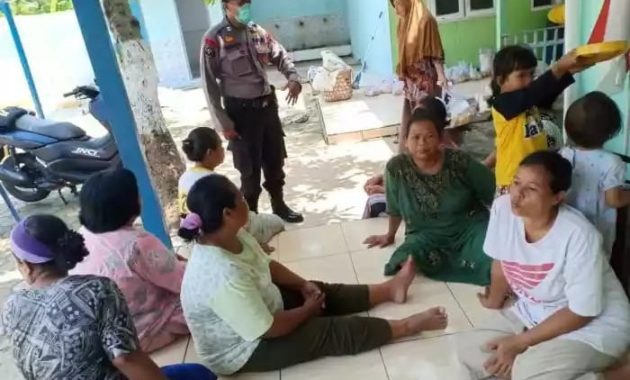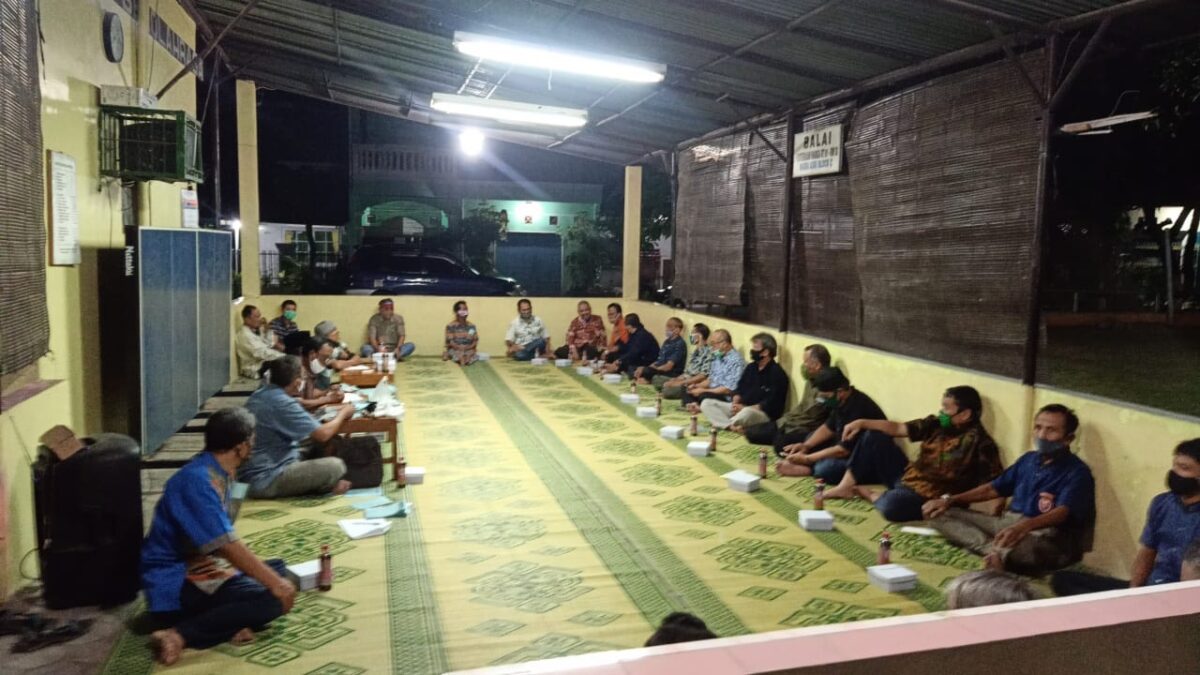In living side by side with other people in the community environment where the importance and the need for social control of the community in it. If there is no social control, various things can happen such as robbery, brawl, or even murder that can harm the environment and the people in it.
However, what is the true meaning of social control itself? Check out the following information regarding social control which is one of the efforts to prevent social deviations, both individually and collectively.
Definition of Social Control
The definition of social control based on the website of the Ministry of Education and Culture or the Ministry of Education and Culture is a mechanism used to direct community members in an environment to implement social values and norms that apply in it.
According to the sociologist Peter L. Berger, the definition of social control is all the ways in which the community tries to discipline or regulate members within the community when they disobey. In addition, Joseph S. Roucek also defines social control as a collective term that has a reference to a planned process.
Where each individual is persuaded, encouraged or even forced to adapt to the habits and values of life that exist in a community group. Bruce J. Cohen who is a sociologist in his understanding of social control as various ways used to encourage every individual in a society to have behavior in accordance with the will of the community group.
Robert MZ Lawang defines social control as all means used by a community environment to return or help perpetrators of social deviations to return to a good path.
Social control according to Karel J. Veeger is a continuation of a socialization process that is carried out and has a relationship with various ways and methods used to encourage each individual to have thoughts and behaviors that are in harmony with the community group and the community environment in which they are located.
Based on the various definitions expressed by these experts, it can be concluded that social control is a process that is owned or used by a person or group with the aim of influencing, inviting, or even forcing other existing members to instill in themselves the values and norms that apply in the community. that’s where they are.
The Purpose of Social Control
After understanding what social control is, there are several reasons why it exists in a society.
- Reducing social deviant behavior that may be carried out by someone, with the instillation of values and norms, a person will understand not to do things that can harm himself and others.
- Creating peace and harmony in coexistence in the community, with awareness in every individual in society, the risks of social deviation will be minimized so that it will create peace in an environment.
- Making the perpetrator aware of the mistakes he made and willing to improve himself and his behavior towards others.
- Make the perpetrators of social deviation have the awareness to comply with the values and norms that exist and apply in the community.
- Making people understand and instill in themselves the values and norms that exist both self-awareness and coercion or encouragement from various factors.
Characteristics of Social Control
Social control that exists in a community environment itself has various characteristics that we can find, as follows.
- The first characteristic of social control is to have a method or technique used to control the people in the environment.
- The second characteristic of social control is that it aims to achieve a balance between stability and changes that are taking place in the community.
- The third characteristic of social control is that it is usually carried out by a group of people against the individual concerned or other groups in a society.
- The fourth characteristic of social control is that it has a two-way system that is often not realized by the parties concerned.
Types of Social Control
Based on the implementation time, the types of social control can be divided into two, namely, preventive social control and representative social control which are explained as follows.
1. Preventive social control
The first type of social control based on the time of its implementation is preventive social control which is a control that occurs in the community before the existence or occurrence of a deviant behavior.
This preventive social control is usually carried out by someone through socialization of existing norms, education of the surrounding community, community education, and providing advice and consequences so that social deviations do not occur.
2. Repressive social control
The second type of social control based on the time of its implementation is repressive social control which is a control that occurs in a community environment after deviant behavior occurs in the community.

This repressive social control itself is usually in the form of an effort made through giving consequences for those who violate, commensurate punishments, advice and counseling so as not to repeat it again and realize that it is a mistake. Based on the implementing officers, the types of social control can also be divided into two, namely, formal control and informal control.
3. Formal controls
The first type of social control based on its implementing officers is formal control which is usually carried out by various official institutions that officially declare regulations and values and norms in an existing environment.
In general, the rules as well as values and norms that exist in the formal control environment are made in writing and there are already standards that apply in it. Formal control itself can be seen in several environments such as in the company environment, trade union associations, and existing judicial institutions.
4. Informal controls
The second type of social control based on its implementing officers is informal control which is usually made in a community group that has an unofficial nature and the existing rules or values and norms are not written.
Informal control can generally be seen in everyday life, such as when we gather with family or friends. These informal controls are also generally unplanned and occur spontaneously. For example, when we gather with friends and play a game.
When someone cheats, that person will be ridiculed. This is a form of informal control. Based on its nature, the types of social control can also be divided into two, namely, curative social control and participatory social control.
5. Curative social control
The first type of social control based on its nature is curative social control which is a form of social control that is carried out through various coaching and healing to perpetrators of social deviations to change the values and norms that exist in themselves. We can see curative social control through the rehabilitation provided to users of illegal drugs or drugs and alcoholic beverages.
6. Participatory social control
The second type of social control based on its nature is participatory social control which is a form of social control carried out by inviting or involving social deviants who have changed themselves to help improve the values and norms of other social deviants.
We can see participatory social control through how a former drug user or drug user is used as an anti-drug ambassador to invite other people who are still doing this to have a desire to change and become better.
Social Control Function
The following are some of the functions of social control in the community. Check out the following information.
The first function of social control is to strengthen existing societal beliefs about social values and norms. With the planting and strengthening of this belief, it can directly affect the sustainability of the existing community order. Ways that can be done to strengthen this belief are through various institutions such as schools, families, or through suggestions from the social environment.
The second function of social control is to provide rewards to each party who is able to comply with social values and norms that apply to the community. What is meant by reward here is to give praise, respect, and give gifts to members of the community. The purpose of giving these rewards is so that everyone continues to carry out existing values and norms and provides an example for other members to become even better.
The third function of social control is to develop inner shame. What is meant is that when a person who is a social deviant realizes his mistake, he will be ashamed to admit his mistake and his self-esteem will decrease. In addition, the consequences for the perpetrators of social deviance such as criticism or negative comments that come from the community will make him feel ashamed and deterred. That way, the person will have a sense of shame so that in the future they will not commit social deviations again.

The fourth function of social control is to develop inner fear. When a person has a fear of doing an act or thing that can pose a risk of getting consequences, it will indirectly make him aware to avoid these things. With that fear, he will try to do good things and avoid things that are risky to harm himself and others.
The fifth function of social control is to create a legal system in a society. In order for a common goal or agreement to be achieved in an environment, it is necessary to apply values and norms to regulate every member of the community in it. With this legal system, which contains rules and consequences that can be accepted by any social deviant behavior, people will be aware not to do this if they do not want to get a reward for their actions.
Forms of Social Control
In people’s lives, there are various forms of social control that can be done or seen. Here are some forms of social control.
1. Gossip
The first form of social control is gossip or what is often referred to as hearsay, which is a behavior of exchanging information carried out by someone without clear concrete evidence of an event or negative behavior.
2. Reprimand
The second form of social control is a reprimand which is generally carried out by a person or a group against perpetrators of social deviance that can disrupt the harmony of the community environment. By doing this, someone gives direct and open criticism so that the perpetrator of the social deviation can immediately realize the mistake he has made.
3. Sanctions
The third form of social control is sanctions or punishments given to people who commit social deviant behavior. For example, in everyday life, when we go to school and someone is reprimanded for cheating on an exam, the score given is zero. That way he became aware of being afraid and not doing it again. This form of sanction itself also has two benefits, namely, helping someone to be aware of the social deviant behavior that he has committed, and being a warning or reminder for other community members not to make the same mistake.
4. Education
The fourth form of social control is education, where the higher the education a person has, the better understanding of existing values and norms, and can practice them in real situations and help bring about change in the community environment.
5. Religion
The fifth form of social control is religion, where in religion it is taught for everyone to maintain good relations between each other, relations with other creatures, and also their relationship with those in power. In religious teachings, there are also various prohibitions and orders to stay away from negative things that can become social deviations, because later they will get sanctions.
Ways of Social Control
Here are some ways that can be done to carry out social control in a community environment.
1. Persuasive Social Control
The first method used to exercise social control is to use persuasive methods. Where by using this method, there is no violence against perpetrators of social deviance, but the method used is to advise, provide advice and guidance so as not to commit deviant behavior in the future. Persuasive methods are usually carried out within the community through verbal or symbolic forms in the form of banners, posters, or public service advertisements that are distributed to community members.
2. Coercive Social Control
The second method used to exercise social control is to use coercive methods. Where by using this method, the occurrence of coercion or violence against perpetrators of social deviance both in physical and psychological forms. This is often done by the authorities when there is no other way to make the perpetrator aware.
However, using this method often leads to consequences such as negative reactions from the other party. One example that we can see is the expulsion and control of street vendors or street vendors who sell on the highway which often makes the roads narrow and causes congestion. Therefore, often the patrolling police warn them to move, but are still ignored until they use this coercive method.
3. Socialization
The third method used to carry out social control is to use socialization methods. Where by using this method, community members are taught to create a habit and instill in themselves the values and norms that apply to a community environment. This method is carried out through socialization to the surrounding community, by introducing existing norms and values and their application to attitudes and behavior in everyday life in the community.
4. Social Emphasis
The fourth method used to exercise social control is through social suppression. Where by using this method, it is expected to be able to control the behavior of each member of the environment in it. By doing this, it is hoped that a community environment can instill in itself the values and norms that exist in each individual so that they can live side by side properly.
5. Preventive social control
namely prevention before deviations from the norms and values of society occur. For example, parents who forbid their children to hang out with friends who like to gamble. This is so that his son does not become a gambler later.
6. Repressive social control
namely an effort to restore the situation after the deviation of the values and norms of society. For example, someone who breaks a promise is reported to the court, so the judge imposes a sentence by paying a debt and a fine.

